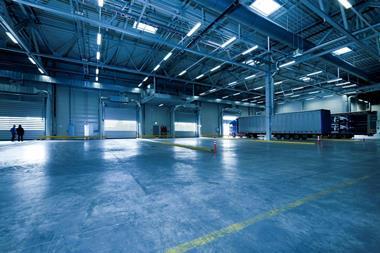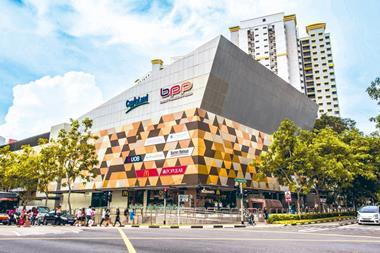Oil revenues are surging, the rate of development is staggering and the potential for returns is very appealing. But there are concerns about capacity and the role the region will play in the world economy. Ian Cundell reports
Forget for a moment that this is a feature about the Middle East. Think instead about Beijing and the 2008 Olympics. Consider the logistics of organising them not as a sporting event but as a visitor destination. Think about the accommodation demands that China is dealing with to ensure the visitors have a place to stay.
Then wonder this: why does Dubai have a hotel-room pipeline greater than Beijing has in the run-up to the Games?
Ok, so it is a somewhat unfair comparison: China needs to be ready by next summer, while the Dubai pipeline runs out to 2010 and beyond. But outside the rarefied cloisters of the property and construction business, the sheer scale of ambition of real estate development in the Middle East is going almost unnoticed, compared with China and to a lesser extent India.
According to Lodging Econometrics, Dubai accounts for 42% of the Middle East hotel pipeline, with over 40,000 rooms - hugely skewed towards 4 or 5 star - at some stage of development in 101 schemes. LE describes this as "an unprecedented gamble on luxury development". So the answer to the puzzle is quite simple: Dubai intends to become a world-class resort and nothing as transient as an Olympics will stop that.
Blair Hagkull, managing director for Jones Lang LaSalle, Middle East and North Africa, says that in the Gulf between $1tn-$1.3tn (€700-€900bn) of announced projects are either underway or at the planning stages, of which $250-300bn is in Dubai. "In effect we're building countries," he says.
What is less well understood is the impact this scale of investment has in the wider region. "For every Chelsea Barracks [the London site which Qatari Diar Real Estate Investment Company bought for a reported £900m in March] there is perhaps ten times that in, say, Morocco," says Hagkull. In Abu Dhabi, Plan Abu Dhabi 2030 aims to upgrade the UAE capital to a "global capital city". Ten policy statements specify land uses, building heights and transportation plans for the entire metropolitan area of Abu Dhabi. Under the plan, the city is projected to grow to over 3 million people by 2030. CBRE's 2nd Quarter Abu Dhabi report argues that the key to future demand and supply characteristics will be the Free Zones and Investment Zones, but on any measure this is large-scale development.
It is not hard to identify where the weight of investment originates: four years of steadily rising oil prices. According to DEGI Research, the research arm of the German fund: "Revenues from the oil and gas sectors account for two-thirds to four-fifths of government revenues in the GCC nations. And the correlation between national income and the oil price is even higher."
But the next stage is much less about oil and more about capacity. Hagkull notes that Dubai is already the largest port between Singapore and Rotterdam while Jadwa investments argued that for Saudi Arabia "Megaproject implementation, broad liberalisation and enhancements to the business environment will push real non-oil private sector growth up to an average of nearly 8%. Growth will be fastest in manufacturing, communication, finance and construction." Although Jadwa expects inflation to remain low - at around 4% - rents will take over from food prices as the major contributor, while heightened competition lowers the price of goods and services such as telecoms, financial services and transport.
Meanwhile, DEGI Research sees the establishment of a major financial centre as the key to the region's sustained growth. But after comparing Manama, Doha and Dubai it concludes that - despite a relatively stable and favourable political and legal framework - ambitions for becoming a global financial centre are still not justified. More realistic is the possibility of establishing a regional centre, with a strong specialisation in, say, Islamic banking (see panel) a role, the report concludes, is most likely to be filled by Dubai. JLL's Hagkull adds: "Dubai is not really about oil."
With office space more expensive than in Singapore or New York and set to quadruple by 2010, from 1.6m m2, outpacing even the vigorous population growth of the region, the prospects look enticing. But, says DEGI Research, low transparency remains an issue. Further deregulation initiatives can be expected on the property markets, which should meet the needs of foreign investors in particular.
Not only is development happening on a staggering scale throughout the region (see map), but it offers a very different investment proposition. Investors in the mature markets such as the UK are used to operating on highly compressed yields - as low as 4% and typically in the 6-8% range. The Middle East, on the other hand, offers yields on the 10-15% range, depending on the appetite for risk.
But, of course, the global economy will have its say. It is not hard to see where sources of concern for the long-term health of the Middle East markets originate. They are the same as elsewhere with the knock-on effects of the US sub-prime debacle and the ensuing credit crunch giving pause for thought.
Jadwa Investments reports that Saudi banks are not over-exposed, but notes: "These
events have ended a multi-year period of financial market stability that had pushed credit spread ... to historical lows and equity markets to all-time highs. Worries about further fallout from the sub-prime mortgage market are likely to hang over global markets and the economic outlook for some time to come." Jadwa expects greater volatility in asset markets - as investors react disproportionately to bad news - with a reduced appetite for risk.
Yet this may not be enough to dampen a real estate market that is truly vast. Efg-Hermes has revised forecasts that Dubai prices would drop in 2007, citing the impact of material supply shortages on completions, meaning that less space has been delivered than expected. Efg-Hermes now expects the supply-demand balance to push prices down no earlier than late 2008. And with up to 300,000 new residents expect to add to Dubai's 1.4m population this year what property investors like to call ‘fundamentals' might yet soften any blow. Rental growth might have fallen, but rental decline seems far from certain.
The CBRE 2nd Quarter Dubai report expects rents to level out by the end of 2007, with demand for freehold property still being driven by the "exponential rise in expatriate immigration" and notes: "the more objective analysts focus on the true level of demand as opposed to those suggested by some property vendors".
Abu Dhabi presents a similar uncertain picture. Abu Dhabi-based investment bank The National Investor say the Emirate could hit over-supply in 2010, arguing that investors interested in the market should "stay away from single, direct equity investments, which bring significant volatility and risk."
Developers remain confident. Peter Riddoch, chief executive of DAMAC Properties - which says it has 79 towers across the Middle East, worth $9bn - says that now is the ideal time to invest in commercial property in Dubai: "Rather than investing in residential property, more and more private individuals are turning to commercial property to achieve higher returns. A smaller initial outlay is required in Dubai to achieve the same return as elsewhere. For example, a commercial investment in Dubai of £180,000 would yield the same return as a comparable property in the UK worth £500,000."
Investment patterns in Dubai's commercial property sector reveal much local market confidence. Currently 40% of purchasers are local private or corporate investors, 30% are international and a further 30% are from the Gulf Co-operation Council region, according to DAMAC. At the time of writing, Dubai Properties was due to unveil two new projects worth a combined AED40bn (€7.6bn) within Business Bay and Dubai Land. Dubai Properties CEO Mohamed Binbrek said: "Unstable property market trends elsewhere in the world will continue to buoy the real estate sector in the GCC region. While announcements on major projects are tapering off, potential opportunities in niche segments still exist."
Dubai is not the only place where confidence persists: government-owned Dubai property developer company Limitless said it plans to build an $11.98bn residential project in Saudi Arabia.
Al-Wasl, to be developed on 1,411 hectares to the north of Riyadh, will comprise offices, hotels, mosques, educational facilities and shopping malls, the firm said.
"Riyadh's population is growing by 150,000 - or 3% - every year. Some 50,000 new houses are required annually to accommodate the capital's rapidly increasing numbers," Saeed Ahmed Saeed, Limitless's chief executive officer, said.
Meanwhile, Sharjah-based Tameer has announced plans to build a mixed-use 73-storey skyscraper, Tameer Towers, in Abu Dhabi, worth $1.9bn on Shams, between the sea and the 1 million square feet Central Park.
So if global financial turmoil seems to be having little impact on the heat of the boom, what are the threats? The instinct is to fall back on property fundamentals, but here the investor is in something of a bind: such is the pace of development that up-to-date, reliable data is thin on the ground.
A new report from Colliers International notes that occupancy rates at high end residential schemes in Dubai are below those at less prestigious schemes - 70% compared with 94% and it is far from atypical for weakness in a market to emerge first at the luxury end. Colliers is also wary about the outlook for office property because - despite occupancy rates in the high 90s %, the pipeline to the end of 2009 is vast at 5.9m m2, while older retail malls seems set to be hit by the arrival of new mega-malls.
In less-developed markets the picture is still harder to ascertain: a combination of other centres being slow to permit foreign buyers and the sheer resource constraints of this scale of development have stopped supply overwhelming demand. But the credit crunch has forced a change in investment appraisals.
In fact the simple truth is exactly the same as in any other real estate market: will the credit crunch spill over into the wider economy and provoke recession? It is, as ever, the fundamentals of demand that will dictate the future of the market.
Islamic investment takes wing
Historically most of the financial backing for property development has come from conventional sources. Increasingly, however, Islamic banking principles - where no interest comes into play - are being deployed. It is a relatively young concept - the first Islamic bank was set up in 1975 -and "There's no question," says Blair Hagkull of Jones Land LaSalle, "That Abu Dhabi and Bahrain are global hubs of Islamic banking". He says they are proving increasingly popular with residential mortgages.
The value of mortgages in the UAE nearly doubled to AED45.7bn (€12.5bn) at the end of June from AED23.1bn a year earlier. Mortgage lending grew 9% in the second quarter, compared with 80% in 2006, so the scope is huge. Central to Islamic finance is the notion of shared risk and, because Islam sees money as a measuring tool for value, rather than an asset in its own right, it follows that one should not be able to receive interest (riba). Broadly speaking this leads to a form of profit banking, where the lending institution shares in the profit (or loss) of the project.
The first Sharia compliant property fund aimed at gaining a listing (primarily in Dubai with a secondary listing in London) is Al-Umran Global Property Fund, managed by HDG Mansur, using cash and Sharia-compliant debt to assemble a portfolio of $1.2bn-$2bn in North America, Europe, the Middle East, China, India and other parts of Asia in the next six to 12 months.
Western companies are embracing Islamic investment and, says Hagkull, those institutions that do so, such as HSBC, are the ones that are taking off in the region.












